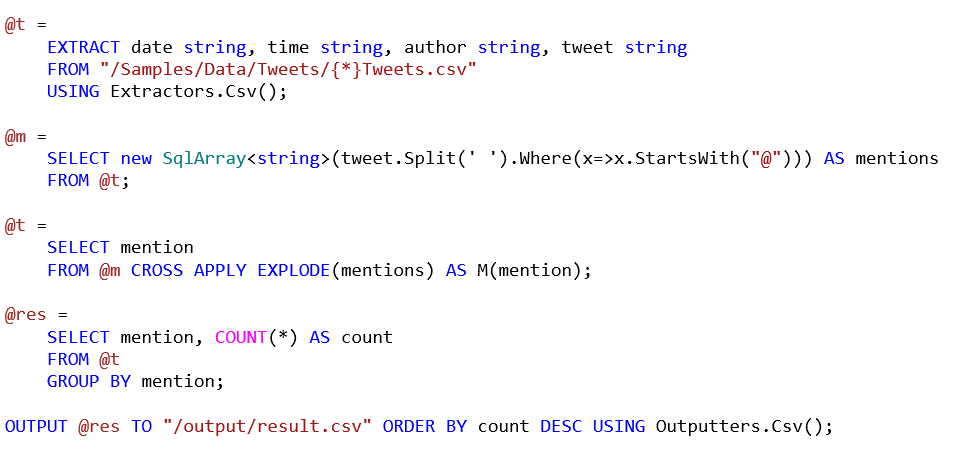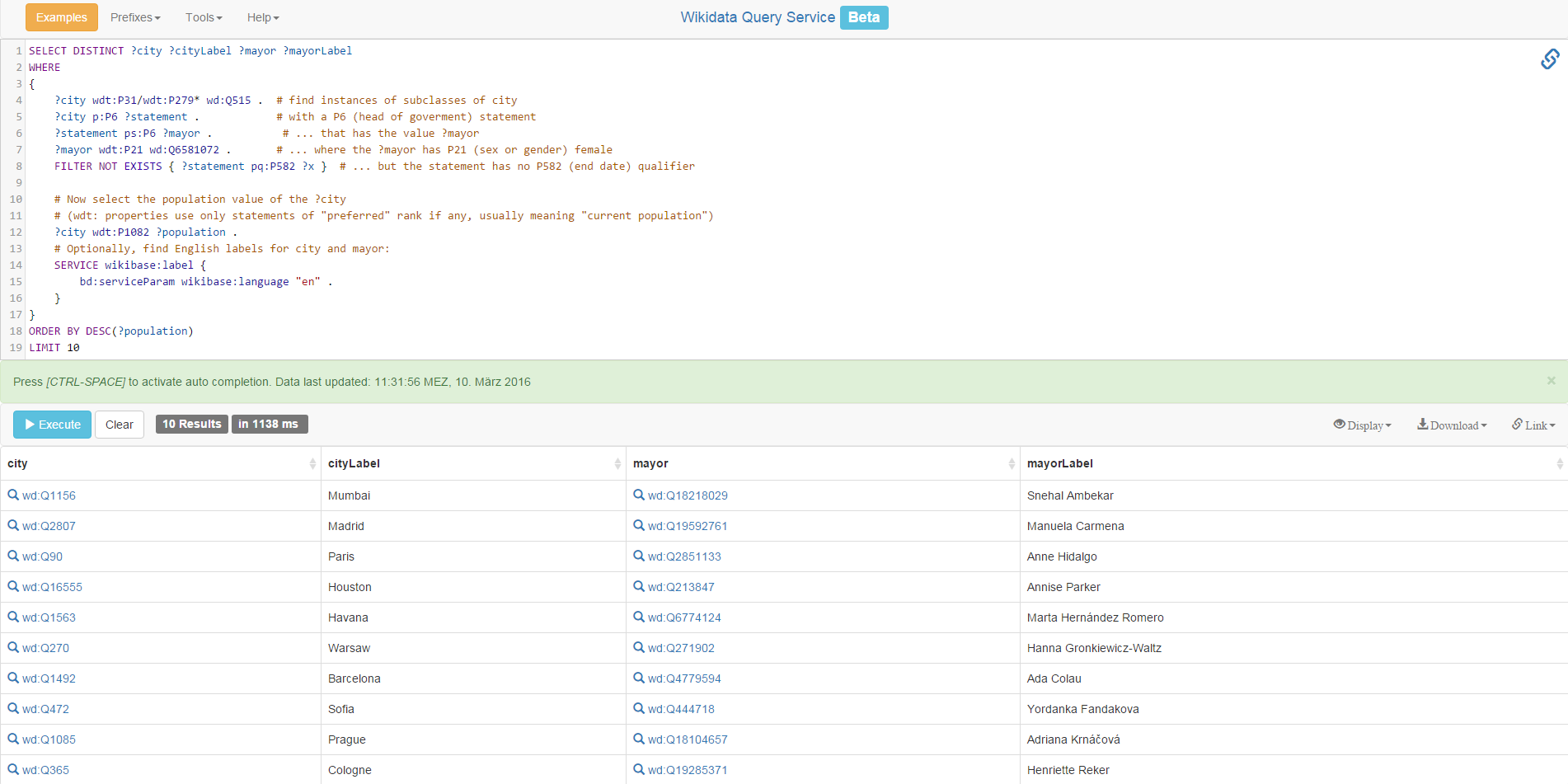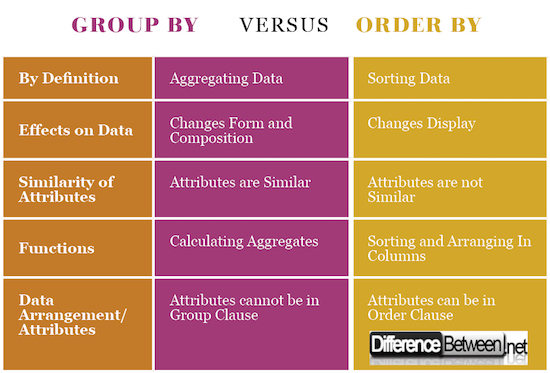Difference between Groupby and Orderby
The innovation of technology has brought about the computer system, which is used in performing different functions after getting instructions from specific inputs. Some of the functions of the computers include programming where they use a specific language to manage data in the database management system. Some of the terms used in programming like order by and group by have proven to be a difficult task among individuals because they cannot tell the difference.
The purpose of this article is to elaborate on the differences between group by and order by so that one can understand without difficulties.

What is Group By?
This is a term used in computer programming to refer to the process of arranging individual results into sub-totals or perform aggregate functions on the results available.
The main purpose of the group by is to perform aggregate results while at the same time arranging them into columns, which will help you to perform the aggregate functions.
Some of the activities carried out for aggregated results include summation, calculation of average, and counting among others.
What is Order By?
The term order by is used in computer programming to refer to the method of sorting out results so that they can display out a certain uniformity.
Ordering your results does not change the results but the manner in which they appear or a displayed.

Difference between Group by and Order by
1) Definition of Group by and Order by
One of the main difference between order by and group by is significantly seen in their definition. People have a perception that the term order by and group by refer to the same thing but their definition shows something different.
The term order by refers to the process of organizing and sorting out data so that it displays a certain uniformity. Order by process does not change the appearance and composition of data but significantly changes the manner in which such data is displayed.
This is not the same for the group by the process, which is highly focused on arranging results into sub-totals or performs aggregate on the results.
2) Effects on Data in Group by and Order by
The other difference between the two computer programming terms is the impact they have on the data or results. Group by programming is assumed to have the most impact on the results because it completely changes the form of the data. Group by performs aggregates while at the same time arranging data into columns to determine the average, summation, minimum results, and maximum results. Order by programming does not have a significant impact on the available data. In fact, order by does not change the form of the results but only focuses on ensuring that the results are displayed differently. Changing the display of the data does not have an impact on the form and composition of results.
3) Similarity of Attributes in Group by and Order by
The other difference is that group by usually performs its functions on the data depending on the similarity attributes demonstrated by the results while or by does not perform operations on the data depending on the similarity attributes. Group by will only perform aggregate and summation activities on the data that shares a significant number of similarities. It is important to highlight that one cannot calculate the average of a data that is not similar. On the other hand, order by ensures that all operations that are carried out to sort out data are done in either ascending or descending order. This means that the data will be displayed in a manner that is easy to read and understand.
4) Functions of Group by and Order by
The functions of each of these programming operations vary from one another and are used when an individual is geared towards achieving different results, which suits what he or she wants. All those individuals who want to arrange data such that it helps them to achieve aggregate results so that they can calculate the mean, the minimum, the maximum, and average should use group by computer programming operations. Contrastingly, any person who wants the data sorted out and later arranged in rows and columns for easier manipulation can only perform that operation by the use of order by programming method. It is important to highlight that each of the programming methods is tailor-made to perform specific operations and they are distinct from one another.
5) Data Arrangement/Attributes of Group by and Order by
The other difference between the two programming terms is the arrangement of the attributes. It is important to highlight that attributes under the aggregate function cannot be in the group by clause while attributes under aggregate can be in order clause. This means that the function of the group by clause is arranging data into groups, which means that it cannot work on already aggregated data. On the other hand, the functions of order by clause include arranging data into columns while at the same time sorting to include data with similar characters together.
Difference between Group by and Order by

Summary of Group by vs. Order by
- Understanding programming terms is an essential aspect of any person who is involved in data analysis or operations involving complex results.
- Besides, it is worth noting the distinguishing factor between order by and group by programming terms because it helps in ensuring one selects the best or the most appropriate tool to manipulate his or her data.
- Lastly, individuals should put in mind that both computer-programming terms are used in organizing data and are only differentiated by the means through which they organize results.
- Difference Between Gross NPA and Net NPA - April 20, 2018
- Difference Between Job Description and Job Specification - April 13, 2018
- Difference Between Yoga and Power Yoga - April 10, 2018
Search DifferenceBetween.net :
Leave a Response
References :
[0]Ballamkonda, Srikanth, Abhinav Gupta, and Andrew Witkowski. "Evaluation of Grouping Sets by reduction to group-by clause, with or without a rollup operator, using temporary tables." U.S. Patent No. 6,775,681. 10 Aug. 2004.
[1]Gray, Jim, et al. "Data cube: A relational aggregation operator generalizing group-by, cross-tab, and sub-totals." Data mining and knowledge discovery 1.1 (1997): 29-53.
[2]Steele Jr, Guy L. "The definition and implementation of a computer programming language based on constraints." (1980).
[3]Image Credit: https://upload.wikimedia.org/wikipedia/commons/e/e7/U-SQL.gif
[4]Image Credit: https://commons.wikimedia.org/wiki/File:Screenshot_Wikidata_Query_Service_(SPARQL).PNG#/media/File:Screenshot_Wikidata_Query_Service_(SPARQL).PNG
